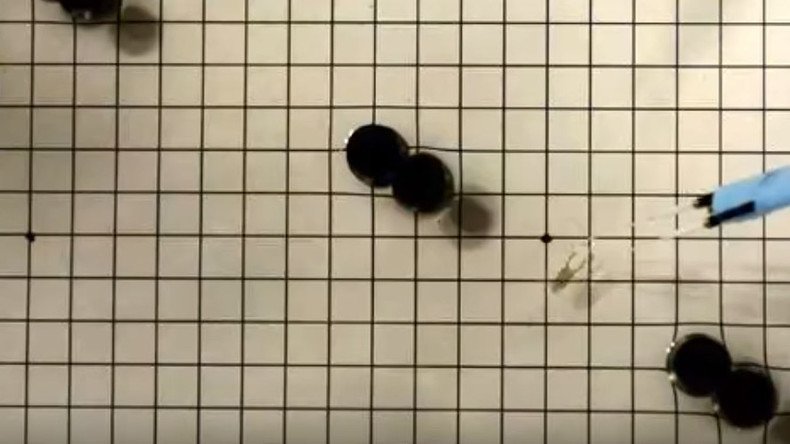Bio-cyborg made of rat heart and gold swims obstacle course (VIDEO)

Scientists adapting living organisms for ‘soft’ robot technology have developed a fishy cyborg made from a rat’s heart which can swim and respond to light signals.
Based on the physical properties of underwater batoid species, the artificial animal has a rubber body and uses muscle cells taken from a rat together with a microfabricated gold spine to mimic the undulating swimming patterns of a stingray.
The project reportedly came from Harvard researcher Kit Parker’s desire to create an artificial heart. He told NPR how the stingray experiment is a “training exercise” for that goal, one he managed to rope in fellow Harvard scientist Sung-Jin Park.
Could synthetic stingray lead to a better artificial heart? https://t.co/QffFjQPFQY@wyssinstitute@npratc#biologypic.twitter.com/Po9D0Ux66B
— OS Fund (@osfund) July 8, 2016
“I sat down with him and I said… ‘we’re going to take a rat apart. We’re going to rebuild it as a stingray and then we’re going to use a light to guide it.’ And the look on his face was both sorrow and horror,” Parker is quoted by NPR.
Detailing the unusual ‘frankenfish’ in the Science journal, the researchers say the breakthrough is another step on the road to building ‘multi level’ tech that combines elements of the nervous system with mechanics.
“This work paves the way for the development of autonomous and adaptive artificial creatures able to process multiple sensory inputs and produce complex behaviors in distributed systems,” the study states.
The ‘adaptive swimming animal’ was reverse-engineered from the skeletal structure of a batoid fish.
It comprises four layers: a 3D rubber body, a chemically neutral gold skeleton, another thin layer of rubber and a base of rat cardiomyocytes (muscles from a rat’s heart).
Some 200,000 cardiac muscle cells were needed to power the ‘robot’ which weighs around 10 grams and is 16 millimeters in length.
The device works by making the muscles to respond to light, which then causes the rubber body to effectively flap and move.
“These myocytes (muscle tissue) were engineered to respond to optical stimuli by expressing a light-sensitive ion channel. Thus, a point light stimulus directed at the front of the ray triggers the propagation of an action.”
Video posted online shows that action, with the cyborg swimming through an obstacle course filled with a glucose liquid known as Tyrode’s solution.
While the stingray is certainly a positive step towards more intelligent and lightweight robotics, the scientists behind it acknowledge it has limitations since in order for it to move it needs to feed off the sugary energy solution.
“These biohybrid systems operate at high energy efficiency and harvest power from energy-dense, locally available nutrients, although at present they required specialized environments (physiological solutions) that may limit their applicability.”












